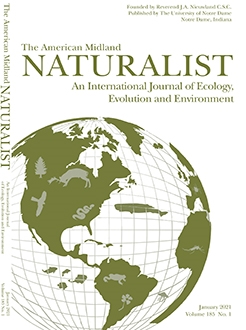Population declines of birds affiliated with grasslands and grass-shrub habitats have been identified as a critical conservation concern. The effects of woody encroachment into grassland-dominated systems, which may contribute to species declines, has been examined mainly in upland systems. We examined occurrence of bird species across a gradient of graminoid- to shrub-dominated wetlands in the Upper Peninsula of Michigan and describe the habitat characteristics associated with their probability of occurrence at segment (100 × 100 m) and landscape (200 m buffer) scales. Because fire can suppress woody encroachment, we also examined the role of fire history, extending from <1 to >50 y on birds and habitat characteristics. We focused on seven species closely affiliated with grassland and grass-shrub habitats, but also found in wetlands: Sedge Wren (Asio flammeus), LeConte's Sparrow (Ammodramus leconteii), Savannah Sparrow (Passerculus sandwichensis), Bobolink (Dolichonyx oryzivorus), Common Yellowthroat (Geothlypis trichas), Swamp Sparrow (Melospiza georgiana), and Alder Flycatcher (Empidonax alnorum). We used nonparametric, multiplicative regression models to relate habitat variables and fire history to probability of species occurrence. Unlike studies in upland grasslands, none of the top models included measures of litter or graminoid height, and the highest probability of occurrence often was where graminoid cover was at intermediate rather than highest levels. Measures of woody cover or structure were important to all seven species modeled. We observed few clear differences in habitat metrics across fire history categories beyond the first year of burning. Years since last burned was in the best model for four of the seven species, despite high variability of habitat metrics within fire history categories; those species were more likely to occur in segments burned 15–19 y earlier. Infrequent light- to moderate-severity fires in fens had little effect on focal species occurrence beyond the first year after burning and little long-term effect to suppress woody cover.
How to translate text using browser tools
11 January 2021
Breeding Bird Occurrence Across a Gradient of Graminoid- to Shrub-Dominated Fens and Fire Histories
Jane E. Austin,
Deborah A. Buhl
ACCESS THE FULL ARTICLE
It is not available for individual sale.
This article is only available to subscribers.
It is not available for individual sale.
It is not available for individual sale.





